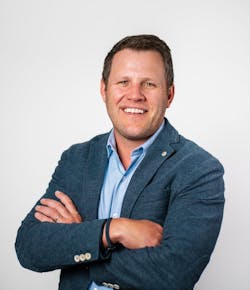Executive Roundtable: Data Center Site Selection Implications
For the second installment of our Executive Roundtable for the Fourth Quarter of 2024, we asked our panel of distinguished industry experts whether they considered data center site selection to always be the North Star for construction and development stakeholders, especially in terms of guiding decisions on power and cooling infrastructure?
As well-noted by Ernest Popescu -- previously Head of Global Site Selection, Iron Mountain Data Centers, now founder and CEO of Seattle metro data center specialist metrobloks -- in a recent DCF 'Voices of the Industry' essay: "Site selection is business critical. In fact, I can’t think of a more critical differentiator than site selection. A data center’s location is the precursor to how easy or difficult it will be to deliver saleable capacity."
Popescu adds, "Making a good site selection decision is part science and part art. The science aspect comes from taking a data driven approach, particularly if you break free of the herd. The data center industry tends to have a groupthink mentality and there is comfort in numbers. But to be at the tip of the spear with new market entry, that requires an analytical and data rich approach and industry knowledge."
He also sounds a note of caution: "If site selection is done poorly, it makes every downstream process more difficult, from constructability and salability to energization and renewable resources."
Our Executive Roundtable for the Fourth Quarter of 2024 includes the following seasoned data center industry leaders:
- Pat McGinn, Chief Operating Officer, CoolIT Systems
- Steve Zielke, Marketing Manager - Global Channel Distribution & Data Centers, Rehlko
- Phillip Marangella, Chief Marketing and Product Officer, EdgeConneX
- Steven Carlini, Vice President of Innovation and Data Center, Schneider Electric
- Danielle Rossi, Global Director – Mission Critical Cooling, Trane
Now onto the second question of the series for our Executive Roundtable for the Fourth Quarter of 2024.
Data Center Frontier: To what degree is data center site selection the North Star for construction and development stakeholders in terms of guiding decisions on power and cooling infrastructure?
Pat McGinn, CoolIT: Site selection is a critical determinant in shaping the design and infrastructure of modern data centers. Beyond proximity to power sources and reliable cooling, site selection now incorporates considerations like regional sustainability policies, access to renewable energy, and environmental impact.
Increasingly, the industry is prioritizing sites in regions with favorable climates for natural cooling or abundant renewable energy sources, as these choices align with both operational efficiency and sustainability goals. However, emerging technologies such as liquid cooling and heat reuse are enabling greater flexibility, allowing operators to consider locations that may not have been viable under traditional cooling models.
For the industry, the challenge is finding balance—leveraging technology to optimize site potential while ensuring scalability and sustainability. As we look to the future, site selection will continue to be guided by evolving energy markets, regulatory frameworks, and the need for geographic diversity to support a global digital infrastructure.
Steve Zielke, Rehlko: Talking about power infrastructure can be tricky in this regard.
A data center’s geographic location is increasingly becoming the most important aspect of a facility’s power and cooling solution, but for backup power the opposite is the case.
It’s never been easier to achieve incredible resiliency from an array of backup power sources, no matter where your data center is located.
While utility grid supply is becoming less available and less stable, backup power supply is only getting stronger in terms of performance, support, and sustainability.
Phillip Marangella, EdgeConneX: Real estate is taking a back seat to power. Power availability and scalability are the primary considerations regarding site selection. Only once hundreds of megawatts can be secured can you consider a property and the power and cooling infrastructure necessary to support high-density deployments from AI.
Steven Carlini, Schneider Electric: Site selection criteria have evolved quite a bit due to grid power availability.
Before data center developers can receive a permit in most areas, they must show they have secured utility sources for power and water. In many cases they will be required to provide an environmental impact assessment that meets certain sustainability criteria, for example committing to a certain percentage of carbon free power or running their operations in a very efficient manner for electricity and water use.
Additionally, site selection in climates where they can take advantage of free cooling (even for AI clusters) has guided placement decisions. However, as more extreme density AI solutions are deployed, the lower liquid temperatures needed to cool the latest GPUs will necessitate active heat rejection and minimize the opportunity for any free cooling.
Danielle Rossi, Trane: Site selection has changed greatly in the last few years. Limited power in primary markets has required new selections be based on available power and fiber causing site selections to be opportunistic. We are now, particularly in the US, seeing extremely diversified locations in non-traditional areas. In Europe and APAC, the tertiary markets from several years ago are quickly becoming primary and secondary markets. We are also seeing a rise in LATAM and Africa site selections to accommodate these power requirements.
The expansion of fiber lines globally will give greater flexibility to choose locations for reasons outside of power infrastructure, such as renewable energy, heat recovery, and community planning. Those additional preplanning considerations will bring the focus back to optimizing designs to reach sustainability goals.
About the Author
Matt Vincent
A B2B technology journalist and editor with more than two decades of experience, Matt Vincent is Editor in Chief of Data Center Frontier.









